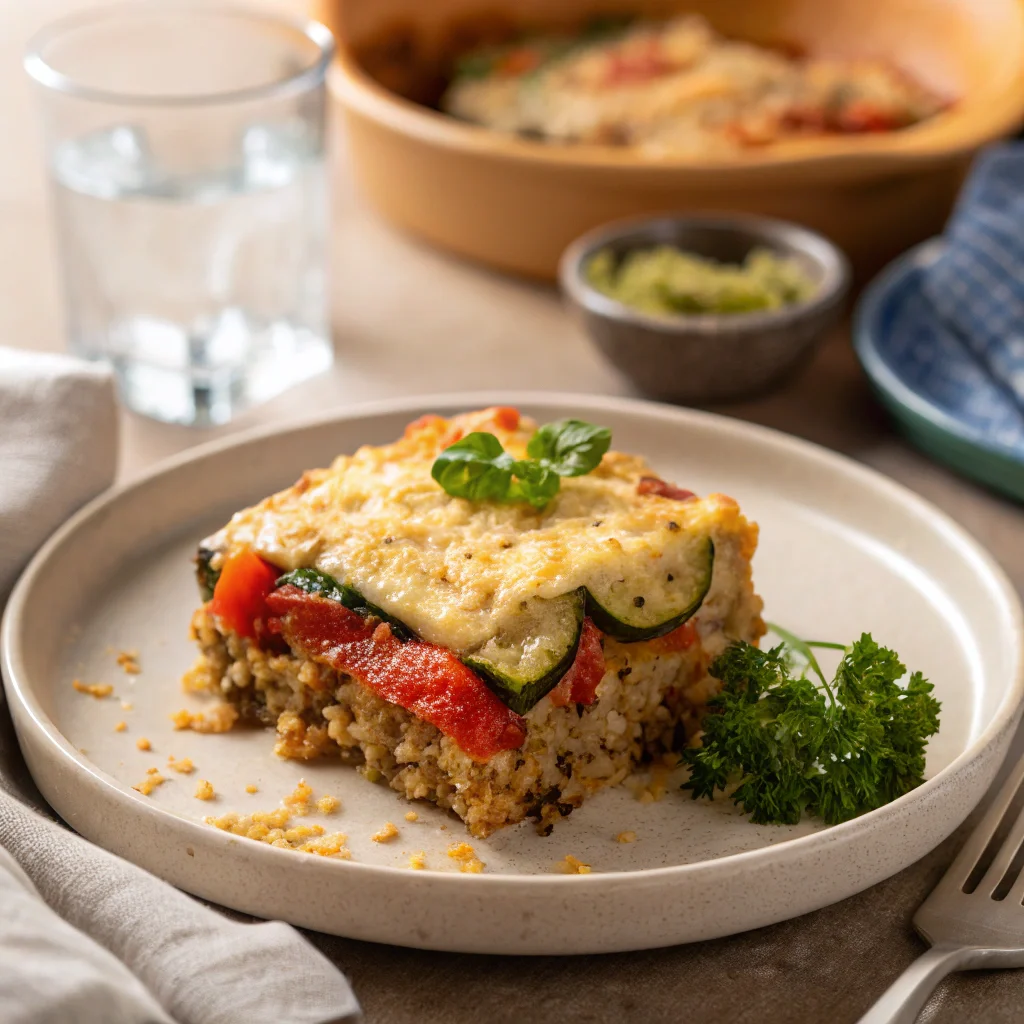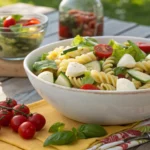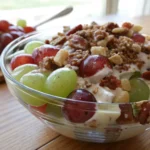As the demand for healthy eating and meal prep continues to rise, many of us are turning to vegetarian meal ideas that are delicious and nutritious. Healthy casserole recipes are a great way to incorporate plant-based meals into your diet, and they can be perfect for a quick weeknight dinner or a weekend meal prep session. With a focus on healthy eating and meal prep, we will explore the top 10 delicious and nutritious vegetarian casserole recipes that cater to your dietary preferences.
Understanding the Appeal of Vegetarian Casseroles
Vegetarian meal ideas have become increasingly popular, and one of the main reasons is the convenience and ease of preparation they offer. A plant-based diet can be incredibly versatile, and casseroles are a great way to enjoy a variety of flavors and textures in one dish. With the rise of busy lifestyles, people are looking for quick and easy solutions that are also healthy and delicious.
One of the main benefits of vegetarian casseroles is that they are often one-dish meals, which means less cleanup and more time to focus on other things. This makes them an ideal choice for families or individuals with limited time for cooking. Additionally, vegetarian options are often lower in calories and saturated fat, making them a great choice for those looking to improve their health.
Benefits of One-Dish Meals
- Convenience: One-dish meals are easy to prepare and require minimal cleanup.
- Time-saving: With all the ingredients in one dish, you can save time on cooking and preparation.
- Variety: Vegetarian casseroles can be made with a wide range of ingredients, making them a great way to add variety to your diet.
Essential Ingredients for Healthy Vegetarian Casseroles
When it comes to creating healthy casserole recipes, the ingredients you choose are crucial. Whole grains, lean protein sources, and a variety of colorful vegetables are essential for a nutritious and delicious meal. By focusing on whole, unprocessed foods, you can create healthy casserole recipes that cater to your dietary needs and provide numerous nutrition benefits.
To get started, consider the following key ingredients:
- Whole grains like brown rice, quinoa, and whole-wheat pasta
- Lean protein sources such as beans, lentils, and tofu
- A variety of colorful vegetables, including leafy greens, bell peppers, and carrots
When selecting ingredients, it’s essential to choose the freshest options available. This will help ensure that your healthy casserole recipes are packed with nutrition benefits and flavor. By incorporating these essential ingredients into your cooking, you can create healthy and delicious meals that are perfect for any occasion.
As you explore the world of healthy casserole recipes, remember to emphasize nutrition benefits and flavor. With a little creativity and the right ingredients, you can create meals that are both nourishing and delicious. Whether you’re a seasoned cook or just starting out, the key to success lies in choosing the right ingredients and having fun with the process.
To explore more options, check out these easy gluten-free dinner recipes.
Nutritional Benefits of Plant-Based Casseroles
A well-planned plant-based diet can provide numerous nutrition benefits, making it an excellent choice for those seeking to improve their overall health. By incorporating plant-based casseroles into their diet, individuals can experience a significant boost in their daily nutrient intake.
Some of the key nutrition benefits of plant-based casseroles include:
- High fiber content, which can help promote digestive health and support healthy blood sugar levels
- Rich antioxidant profile, which can help protect against cell damage and reduce the risk of chronic diseases
- Low saturated fat levels, which can help support heart health and reduce the risk of cardiovascular disease
In addition to these benefits, a plant-based diet can also provide all the necessary nutrients for optimal health, including protein, iron, and calcium. By making informed food choices and incorporating a variety of plant-based casseroles into their diet, individuals can experience improved overall health and well-being.
| Nutrient | Plant-Based Casserole | Benefits |
|---|---|---|
| Fiber | High | Promotes digestive health, supports healthy blood sugar levels |
| Antioxidants | Rich | Protects against cell damage, reduces risk of chronic diseases |
| Saturated Fat | Low | Supports heart health, reduces risk of cardiovascular disease |
Best Healthy Casserole Recipes Vegetarian Options
When it comes to healthy casserole recipes, vegetarian meal ideas are a great way to ensure you’re getting the nutrients you need. These dishes are perfect for vegetarians and non-vegetarians alike, offering a delicious and nutritious alternative to traditional casseroles. With a variety of ingredients and flavors to choose from, you can create a healthy casserole that suits your taste preferences.
Some popular healthy casserole recipes include the Mediterranean Quinoa Casserole, Mexican Bean and Rice Bake, Mushroom and Lentil Shepherd’s Pie, and Greek-Style Veggie Moussaka. These dishes are not only delicious, but they’re also packed with nutrients and can be easily customized to suit your dietary needs. Whether you’re looking for a quick and easy meal or a dish to impress your friends and family, these healthy casserole recipes are a great option.
Mediterranean Quinoa Casserole

This healthy casserole recipe is made with quinoa, vegetables, and a blend of Mediterranean spices. It’s a great source of protein, fiber, and healthy fats, making it an excellent option for vegetarians and non-vegetarians alike.
Mexican Bean and Rice Bake
This vegetarian meal idea is a twist on traditional Mexican cuisine. Made with beans, rice, and a blend of spices, it’s a flavorful and nutritious dish that’s perfect for a weeknight dinner or a special occasion.
Other Options
- Mushroom and Lentil Shepherd’s Pie
- Greek-Style Veggie Moussaka
Try this Campbell Soup Green Bean Casserole for a classic twist, perfect for family dinners.
Protein-Rich Vegetarian Casserole Ideas
When following a plant-based diet, it’s essential to incorporate a variety of protein sources into your meals. Vegetarian casseroles are an excellent way to achieve this, as they can be packed with protein-rich ingredients like tofu, legumes, and whole grains. A well-planned plant-based diet can provide all the necessary protein for optimal health.
In this section, we’ll explore three delicious and protein-rich vegetarian casserole ideas: Tofu and Vegetable Gratin, Chickpea and Sweet Potato Bake, and Three-Bean Casserole Supreme. These recipes are designed to be high in protein, fiber, and other essential nutrients, making them ideal for vegetarians and vegans.
Tofu and Vegetable Gratin
This casserole is a great source of protein, with tofu being the main ingredient. Paired with a variety of vegetables and whole grains, this dish is both nutritious and flavorful.
Chickpea and Sweet Potato Bake
Chickpeas are a rich source of protein and fiber, making them an excellent addition to a plant-based diet. When combined with sweet potatoes and other vegetables, this casserole becomes a nutrient-dense meal option.
Three-Bean Casserole Supreme
This casserole is a protein powerhouse, featuring three types of beans: kidney beans, black beans, and pinto beans. With the addition of whole grains and vegetables, this dish is a complete and balanced meal.
These protein-rich vegetarian casserole ideas are perfect for anyone following a plant-based diet. By incorporating a variety of protein sources into your meals, you can ensure you’re getting all the necessary nutrients for optimal health. Whether you’re a vegetarian or vegan, these recipes are sure to become a staple in your kitchen.
If you’re looking for a comforting meal, this vegetarian lasagna soup is a must-try.
| Casserole Recipe | Protein Content | Key Ingredients |
|---|---|---|
| Tofu and Vegetable Gratin | 20g per serving | Tofu, vegetables, whole grains |
| Chickpea and Sweet Potato Bake | 15g per serving | Chickpeas, sweet potatoes, vegetables |
| Three-Bean Casserole Supreme | 25g per serving | Kidney beans, black beans, pinto beans, whole grains |
Low-Carb Vegetable Casserole Options
For individuals following a low-carb diet, finding delicious and satisfying meal options can be a challenge. However, with a little creativity, it’s easy to create healthy casserole recipes that are not only low in carbs but also packed with flavor and nutrients. One key strategy is to focus on low-carb vegetables like cauliflower, zucchini, and bell peppers, which can be used as substitutes for higher-carb ingredients like pasta and rice.
Some ideas for low-carb vegetable casserole options include:
- Cauliflower gratin with cheese and herbs
- Zucchini and mushroom casserole with a rich tomato sauce
- Bell pepper and onion casserole with a spicy kick
These dishes are not only delicious but also offer a range of health benefits, from reducing inflammation to supporting healthy digestion. By incorporatinglow-carb dietprinciples into your cooking, you can enjoyhealthy casserole recipesthat are both nourishing and satisfying.
| Low-Carb Vegetable | Carb Content (per cup) | Health Benefits |
|---|---|---|
| Cauliflower | 5g | Rich in vitamins C and K, supports healthy digestion |
| Zucchini | 4g | High in antioxidants, supports healthy blood sugar levels |
| Bell Peppers | 6g | Rich in vitamin C, supports healthy immune function |
Common Recipe Mistakes to Avoid
When preparing vegetarian casseroles, it’s essential to be aware of common recipe mistakes that can affect the final result. By following simple cooking tips and avoiding these errors, you can ensure that your casseroles turn out delicious and satisfying every time. One of the most common mistakes is poor temperature control, which can lead to undercooked or overcooked ingredients.
Another mistake is inadequate ingredient preparation, such as not chopping vegetables finely enough or not cooking legumes thoroughly. This can result in uneven textures and flavors in the final dish. To avoid these mistakes, it’s crucial to follow a recipe carefully and take the time to prepare each ingredient properly.
Temperature Control Issues
Temperature control is critical when cooking casseroles, as it can affect the texture and safety of the dish. To avoid temperature control issues, make sure to preheat your oven to the correct temperature and use a food thermometer to check the internal temperature of the casserole.
Ingredient Preparation Errors
Ingredient preparation is another critical step in making a successful casserole. To avoid errors, make sure to chop vegetables finely, cook legumes thoroughly, and prepare each ingredient according to the recipe instructions.
Texture Problems and Solutions
Texture problems can be a common issue in casseroles, but there are simple solutions to avoid them. For example, to prevent a dry casserole, make sure to add enough liquid ingredients, such as broth or sauce. To avoid a soggy casserole, don’t overmix the ingredients, and make sure to cook the casserole at the correct temperature.
| Common Mistake | Solution |
|---|---|
| Poor temperature control | Use a food thermometer and preheat the oven to the correct temperature |
| Inadequate ingredient preparation | Follow the recipe instructions and prepare each ingredient properly |
| Texture problems | Add enough liquid ingredients, don’t overmix, and cook at the correct temperature |
Seasonal Variations and Substitutions
As we explore the world of vegetarian casseroles, it’s essential to consider the importance of seasonal recipes and ingredient substitutions. By incorporating fresh, seasonal ingredients, we can add variety and flavor to our casseroles. For instance, in the winter, we can use root vegetables like carrots and sweet potatoes, while in the summer, we can opt for fresh corn and zucchini.
A key aspect of creating delicious vegetarian casseroles is understanding how to make ingredient substitutions based on the season. Here are some tips for each season:
- Winter: Use hearty vegetables like kale and butternut squash, and substitute with canned beans for added protein.
- Spring: Incorporate fresh asparagus and bell peppers, and substitute with tofu for a protein-rich option.
- Summer: Take advantage of juicy tomatoes and eggplants, and substitute with grilled portobello mushrooms for a meaty texture.
- Fall: Use roasted Brussels sprouts and sweet potatoes, and substitute with lentils for a nutritious and filling option.
| Season | Fresh Ingredients | Substitution Options |
|---|---|---|
| Winter | Carrots, sweet potatoes | Canned beans, tofu |
| Spring | Asparagus, bell peppers | Tofu, tempeh |
| Summer | Tomatoes, eggplants | Grilled portobello mushrooms, lentils |
| Fall | Brussels sprouts, sweet potatoes | Lentils, chickpeas |
FAQs About Healthy Casserole Recipes Vegetarian
Are Casseroles Healthy for You?
Casseroles can be very healthy if prepared with nutritious ingredients. Opt for whole grains, fresh vegetables, lean plant-based proteins, and minimal added fats. By avoiding heavy creams and excessive cheese, you can make satisfying and good casseroles for your health.
What Sides Go Well With Casserole?
Casseroles pair well with a variety of sides, including:
- Fresh green salads with a light vinaigrette.
- Steamed or roasted vegetables.
- Whole grain bread or rolls.
- Fruit salads for a refreshing finish.
Choose sides that complement the flavors of the casserole without overpowering them.
Do You Cook Vegetables Before Putting in a Casserole?
It depends on the vegetable and the recipe. Dense vegetables like potatoes or carrots often require precooking to ensure they soften properly in the casserole. Softer vegetables such as zucchini or spinach may not need to be precooked, as they can cook fully during baking.
What Is in a Casserole?
A casserole typically contains three main components:
- Base: Includes starches like rice, pasta, or potatoes.
- Fillings: Vegetables, plant-based proteins like lentils or beans, or sometimes tofu or tempeh.
- Binder: A sauce or liquid, such as tomato sauce, vegetable broth, or a plant-based creamy alternative.
Toppings like breadcrumbs, cheese, or nuts add texture and flavor.
What Is the Key to Making a Good Casserole?
The key to a great casserole lies in:
- Layering: Evenly distribute ingredients to ensure balanced flavors.
- Seasoning: Use herbs and spices to enhance taste.
- Texture: Incorporate a crunchy topping for contrast.
- Moisture Balance: Avoid over-dry or overly liquid casseroles by using the right amount of sauce.
What Is the Oldest Known Casserole?
The oldest known casserole dates back to ancient times. Early casseroles often consisted of grains, meats, and vegetables cooked together in a single dish. The term “casserole” originated in France in the 18th century, referring to a deep dish used for slow cooking. Over time, casseroles have evolved into the versatile dishes we enjoy today.
Conclusion: Creating Delicious Vegetarian Casseroles for Every Occasion
In this article, we’ve explored the world of healthy casserole recipes and discovered the many benefits of incorporating vegetarian meal ideas into our cooking repertoire. From the convenience of one-dish meals to the nutritional advantages of plant-based ingredients, vegetarian casseroles have become a popular choice for health-conscious home cooks.






